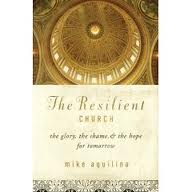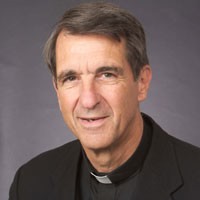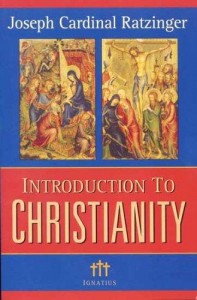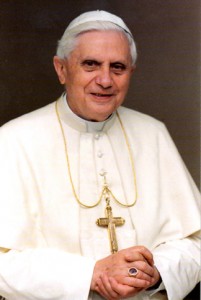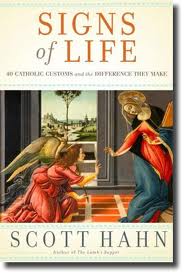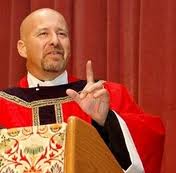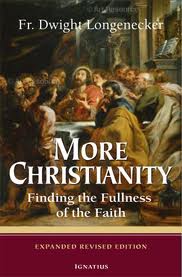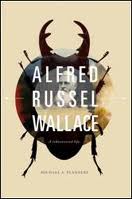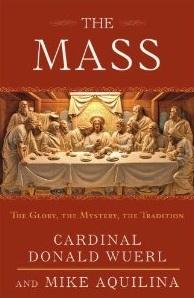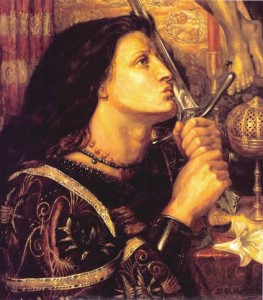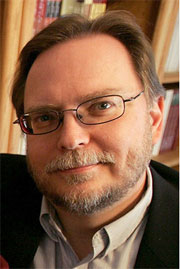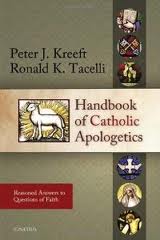VATICAN CITY, 26 JAN 2011 (
vatican.va) – Today I would like to talk to you about Joan of Arc, a young Saint who lived at the end of the Middle Ages who died at the age of 19, in 1431. This French Saint, mentioned several times in the
Catechism of the Catholic Church, is particularly close to St Catherine of Siena, Patroness of Italy and of Europe, of whom I spoke in a recent Catechesis. They were in fact two young women of the people, lay women consecrated in virginity, two committed mystics, not in the cloister, but in the midst of the most dramatic reality of the Church and the world of their time.
They are perhaps the most representative of those “strong women” who, at the end of the Middle Ages, fearlessly bore the great light of the Gospel in the complex events of history. We could liken them to the holy women who stayed on Calvary, close to the Crucified Jesus and to Mary his Mother, while the Apostles had fled and Peter himself had denied him three times. The Church in that period was going through the profound crisis of the great schism of the West, which lasted almost 40 years. In 1380, when Catherine of Siena died, there was not only a Pope but also an antipope; when Joan was born, in 1412, there was a Pope as well as two antipopes. In addition to this internal laceration in the Church, were the continuous fratricidal wars among the Christian peoples of Europe, the most dramatic of which was the protracted Hundred Years’ War between France and England. Joan of Arc did not know how to read or write, but the depths of her soul can be known thanks to two sources of exceptional historical value: the two
Trials that concern her. The first, the
Trial of Condemnation (
PCon), contains the transcription of the long and numerous interrogations to which Joan was subjected in the last months of her life (February-May 1431) and reports the Saint’s own words. The second, the
Trial of Nullity of the Condemnation or of “rehabilitation” (
PNul), contains the depositions of about 120 eyewitnesses of all the periods of her life (
cf.
Procès de Condamnation de Jeanne d’Arc, 3 vol. and
Procès en Nullité de la Condamnation de Jeanne d’Arc, 5 vol., ed. Klincksieck, Paris, 1960-1989). Joan was born at Domremy, a little village on the border between France and Lorraine. Her parents were well-off peasants, known to all as good Christians. From them she received a sound religious upbringing, considerably influenced by the spirituality of the
Name of Jesus, taught by St Bernardine of Siena and spread in Europe by the Franciscans.
The Name of Mary was always associated with the Name of Jesus and thus, against the background of popular piety, Joan’s spirituality was profoundly Christocentric and Marian. From childhood, she showed great love and compassion for the poorest, the sick and all the suffering, in the dramatic context of the war. We know from Joan’s own words that her religious life developed as a mystical experience from the time when she was 13 (
PCon, I, p. 47-48). Through the “voice” of St Michael the Archangel, Joan felt called by the Lord to intensify her Christian life and also to commit herself in the first person to the liberation of her people. Her immediate response, her “yes”, was her vow of virginity, with a new c
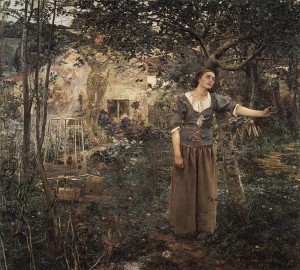
ommitment to sacramental life and to prayer: daily participation in Mass, frequent Confession and Communion and long periods of silent prayer before the Crucified One or the image of Our Lady. The young French peasant girl’s compassion and dedication in the face of her people’s suffering were intensified by her mystical relationship with God.
One of the most original aspects of this young woman’s holiness was precisely this link between mystical experience and political mission. The years of her hidden life and her interior development were followed by the brief but intense two years of her public life: a year of action and a year of passion. At the beginning of 1429, Joan began her work of liberation. The many witnesses show us this young woman who was only 17 years old as a very strong and determined person, able to convince people who felt insecure and discouraged. Overcoming all obstacles, she met the Dauphin of France, the future King Charles VII, who subjected her to an examination in Poitiers by some theologians of the university. Their opinion was positive: they saw in her nothing evil, only a good Christian. On 22 March 1429 Joan dictated an important letter to the King of England and to his men at arms who were besieging the city of Orléans (
ibid., pp. 221-222). Hers was a true proposal of peace in justice between the two Christian peoples in light of the Name of Jesus and Mary, but it was rejected and Joan had to gird herself to fight for the city’s liberation which took place on 8 May. The other culminating moment of her political action was the coronation of King Charles VII in Rheims on 17 July 1429. For a whole year, Joan lived with the soldiers, carrying out among them a true mission of evangelization. Many of them testified to her goodness, her courage and her extraordinary purity. She was called by all and by herself “La pucelle” (“the Maid”), that is, virgin. Joan’s
passion began on 23 May 1430, when she fell into enemy hands and was taken prisoner. On 23 December she was led to the city of Rouen. There the long and dramatic
Trial of Condemnation took place, that began in February 1431 and ended on 30 May with her being burned at the stake.
It was a great and solemn Trial, at which two ecclesiastical judges presided, Bishop Pierre Cauchon and the Inquisitor Jean le Maistre, but in fact it was conducted entirely by a large group of theologians from the renowned University of Paris, who took part in the Trial as assessors. They were French clerics, who, on the side politically opposed to Joan’s, had a priori a negative opinion of both her and her mission. This Trial is a distressing page in the history of holiness and also an illuminating page on the mystery of the Church which, according to the words of the Second Vatican Council, is “at once holy and always in need of purification” (Lumen Gentium, n. 8).
The Trial was the dramatic encounter between this Saint and her judges, who were clerics. Joan was accused and convicted by them, even condemned as a heretic and sent to the terrible death of being burned at the stake. Unlike the holy theologians who had illuminated the University of Paris, such as St Bonaventure, St Thomas Aquinas and Bl. Duns Scotus, of whom I have spoken in several Catecheses, these judges were theologians who lacked charity and the humility to see God’s action in this young woman. The words of Jesus, who said that God’s mysteries are revealed to those who have a child’s heart while they remain hidden to the learned and the wise who have no humility (cf. Lk 10:21), spring to mind. Thus, Joan’s judges were radically incapable of understanding her or of perceiving the beauty of her soul. They did not know that they were condemning a Saint. Joan’s appeal to the Pope, on 24 May, was rejected by the tribunal. On the morning of 30 May, in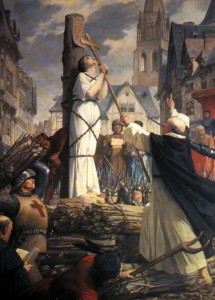 prison, she received Holy Communion for the last time and was immediately led to her torture in the Old Market Square. She asked one of the priests to hold up a processional Cross in front of the stake. Thus she died, her gaze fixed upon the Crucified Jesus and crying out several times the Name of Jesus (PNul, I, p. 457; cf. Catechism of the Catholic Church, n. 435). About 25 years later the Trial of Nullity, which opened under the authority of Pope Calixtus III, ended with a solemn sentence that declared the condemnation null and void (7 July 1456; PNul, II, pp. 604-610). This long trial, which collected the evidence of witnesses and the opinions of many theologians, all favourable to Joan, sheds light on her innocence and on her perfect fidelity to the Church. Joan of Arc was subsequently canonized by Benedict XV in 1920. Dear brothers and sisters, the Name of Jesus, invoked by our Saint until the very last moments of her earthly life was like the continuous breathing of her soul, like the beating of her heart, the centre of her whole life. The Mystery of the Charity of Joan of Arc which so fascinated the poet Charles Péguy was this total love for Jesus and for her neighbour in Jesus and for Jesus. This Saint had understood that Love embraces the whole of the reality of God and of the human being, of Heaven and of earth, of the Church and of the world. Jesus always had pride of place in her life, in accordance to her beautiful affirmation: “We must serve God first” (PCon, I, p. 288; cf. Catechismo della Chiesa Cattolica, n. 223). Loving him means always doing his will. She declared with total surrendur and trust: “I entrust myself to God my Creator, I love him with my whole my heart” (PCon, I, p. 337). With the vow of virginity, Joan consecrated her whole being exclusively to the one Love of Jesus: “it was the promise that she made to Our Lord to preserve the virginity of her body and her mind well” (PCon, I, pp. 149-150). Virginity of soul is the state of grace, a supreme value, for her more precious than life. It is a gift of God which is to be received and preserved with humility and trust. One of the best known texts of the first Trial concerns precisely this: “Asked if she knew that she was in God’s grace, she replied: ‘If I am not, may it please God to put me in it; if I am, may it please God to keep me there’” (ibid., p. 62; cf. Catechism of the Catholic Church, n. 2005).
prison, she received Holy Communion for the last time and was immediately led to her torture in the Old Market Square. She asked one of the priests to hold up a processional Cross in front of the stake. Thus she died, her gaze fixed upon the Crucified Jesus and crying out several times the Name of Jesus (PNul, I, p. 457; cf. Catechism of the Catholic Church, n. 435). About 25 years later the Trial of Nullity, which opened under the authority of Pope Calixtus III, ended with a solemn sentence that declared the condemnation null and void (7 July 1456; PNul, II, pp. 604-610). This long trial, which collected the evidence of witnesses and the opinions of many theologians, all favourable to Joan, sheds light on her innocence and on her perfect fidelity to the Church. Joan of Arc was subsequently canonized by Benedict XV in 1920. Dear brothers and sisters, the Name of Jesus, invoked by our Saint until the very last moments of her earthly life was like the continuous breathing of her soul, like the beating of her heart, the centre of her whole life. The Mystery of the Charity of Joan of Arc which so fascinated the poet Charles Péguy was this total love for Jesus and for her neighbour in Jesus and for Jesus. This Saint had understood that Love embraces the whole of the reality of God and of the human being, of Heaven and of earth, of the Church and of the world. Jesus always had pride of place in her life, in accordance to her beautiful affirmation: “We must serve God first” (PCon, I, p. 288; cf. Catechismo della Chiesa Cattolica, n. 223). Loving him means always doing his will. She declared with total surrendur and trust: “I entrust myself to God my Creator, I love him with my whole my heart” (PCon, I, p. 337). With the vow of virginity, Joan consecrated her whole being exclusively to the one Love of Jesus: “it was the promise that she made to Our Lord to preserve the virginity of her body and her mind well” (PCon, I, pp. 149-150). Virginity of soul is the state of grace, a supreme value, for her more precious than life. It is a gift of God which is to be received and preserved with humility and trust. One of the best known texts of the first Trial concerns precisely this: “Asked if she knew that she was in God’s grace, she replied: ‘If I am not, may it please God to put me in it; if I am, may it please God to keep me there’” (ibid., p. 62; cf. Catechism of the Catholic Church, n. 2005).
Our Saint lived prayer in the form of a continuous dialogue with the Lord who also illuminated her dialogue with the judges and gave her peace and security. She asked him with trust: Sweetest God, in honour of your holy Passion, I ask you, if you love me, to show me how I must answer these men of the Church” (PCon, I, p. 252). Joan saw Jesus as the “King of Heaven and of the earth”. She therefore had painted on her standard the image of “Our Lord holding the world” (ibid., p. 172): the emblem of her political mission. The liberation of her people was a work of human justice which Joan carried out in charity, for love of Jesus. Her holiness is a beautiful example for lay people engaged in politics, especially in the most difficult situations. Faith is the light that guides every decision, as a century later another great Saint, the Englishman Thomas More, was to testify.
In Jesus Joan contemplated the whole reality of the Church, the “Church triumphant” of Heaven, as well as the “Church militant” on earth. According to her words, “About Jesus Christ and the Church, I simply know they’re just one thing” (ibid., p. 166). This affirmation, cited in theCatechism of the Catholic Church (n. 795), has a truly heroic character in the context of theTrial of Condemnation, before her judges, men of the Church who were persecuting and condemning her. In the Love of Jesus Joan found the strength to love the Church to the very end, even at the moment she was sentenced. I like to recall that St Joan of Arc had a profound influence on a young Saint of the modern age: Thérèse of the Child Jesus. In the context of a completely different life, spent in the cloister, the Carmelite of Lisieux felt very close to Joan, living in the heart of the Church and participating in Christ’s suffering for the world’s salvation. The Church has brought them together as Patronesses of France, after the Virgin Mary. St Thérèse expressed her desire to die, like Joan, with the Name of Jesus on her lips (Manoscritto B, 3r), and she was motivated by the same great love for Jesus and her neighbour, lived in consecrated virginity. Dear brothers and sisters, with her luminous witness St Joan of Arc invites us to a high standard of Christian living: to make prayer the guiding motive of our days; to have full trust in doing God’s will, whatever it may be; to live charity without favouritism, without limits and drawing, like her, from the Love of Jesus a profound love for the Church. Thank you.
 thousand years. Fast-paced sketches of critical periods in church history give readers perspective on the challenges faced by the church today. Mike Aquilina does not shrink from the realities of the past, including badly behaved leaders and those who betrayed the Lord. Yet he also leaves us all with well-founded hope for the future: God remains faithful in every circumstance and fulfills his promise to remain with his church always. Hosted by Kris McGregor
thousand years. Fast-paced sketches of critical periods in church history give readers perspective on the challenges faced by the church today. Mike Aquilina does not shrink from the realities of the past, including badly behaved leaders and those who betrayed the Lord. Yet he also leaves us all with well-founded hope for the future: God remains faithful in every circumstance and fulfills his promise to remain with his church always. Hosted by Kris McGregor
